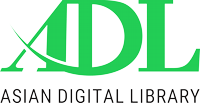Human resource management and economic practices in business enterprises in Pakistan
Keywords:
HRM, Economic Practices, Business Enterprises, Pakistan, Quantitative AnalysisAbstract
This study explores the interplay between Human Resource Management (HRM) practices and economic strategies within Pakistani business enterprises. HRM has emerged as a key determinant of organizational performance, influencing productivity, employee satisfaction, and profitability. The economic landscape of Pakistan presents unique challenges, such as fluctuating inflation rates, policy instability, and skill shortages, which necessitate efficient HRM practices.
This research employs a mixed-method quantitative approach to analyze the relationship between HRM strategies and business success, using primary survey data from 200 business firms across various industries. The study incorporates regression analysis and structural equation modeling to determine the impact of HRM policies, including recruitment, training, compensation, and employee retention, on economic performance indicators such as revenue growth, profitability, and employee turnover.
Findings suggest a strong correlation between effective HRM and economic sustainability. Businesses that invest in structured HRM frameworks tend to experience higher workforce productivity and financial stability. The study recommends policy interventions to enhance HR practices, emphasizing skill development and data-driven decision-making.
Downloads
References
Fried, B. J., & Fottler, M. D. (2015). Human resources in healthcare: Managing for success. Health Administration Press.
Fried, B. J., & Fottler, M. D. (2018). Fundamentals of human resources in healthcare (2nd ed.). Health Administration Press.
Harter, J. (2015). Companies are maximizing only 5% of their workforces. GALLUP Business Journal. Retrieved from Gallup
Harter, J., & Adkins, A. (2017). Are your star employees slipping away? GALLUP Workplace. Retrieved from Gallup
Esen, E. (2015). U.S. job recovery and retention poll findings. Society for Human Resource Management.
Hawk Incentives. (2015). 23 employee motivation statistics. Retrieved from Hawk Incentives
Globoforce. (2016). SHRM/Globoforce survey reveals positive employee experience critical to employee retention. Retrieved from Globoforce
Hansen, B. (2018). Crash and burn out: Is workplace stress the new normal? Retrieved from Wrike
Harter, J., & Mann, A. (2017). The right culture: Not just about employee satisfaction. GALLUP Workplace. Retrieved from Gallup
Effron, N., & Ort, M. (2010). One-page talent management: Eliminating complexity, adding value. Harvard Business School Publishing.
Aydoğmuş, M., Gülay, G., & Ergun, K. (2022). Impact of ESG performance on firm value and profitability. Borsa Istanbul Review, 22(S2), S119-S127. https://doi.org/10.1016/j.bir.2022.11.006
Cortet, M., Rijks, T., & Nijland, S. (2016). PSD2: The digital transformation accelerator for banks. Journal of Payments Strategy & Systems, 10(3), 246-259.
Alos-Simo, L., Verdu, J. A., & Gomez-Gras, J. M. (2017). The influence of digital orientation on the digital transformation of firms. Technological Forecasting and Social Change, 123, 219-229.
Wen, Y., Liu, Y., & Liang, C. (2022). Digital transformation and business model innovation in emerging markets. Asian Business & Management.
Nasisri, S., & Visutsak, P. (2022). The impact of digital maturity on financial success in SMEs. Journal of Small Business and Enterprise Development.
Chatterjee, S., & Kar, A. K. (2022). Digital entrepreneurship: The role of perceived utility, ease of use, and willingness to change. Technological Forecasting & Social Change, 175, 121384.
Dewan, S., & Kraemer, K. L. (2003). Information technology and productivity: A country-level perspective. Information Systems Research, 14(1), 17-32.
Brynjolfsson, E., & McAfee, A. (2013). The second machine age: Work, progress, and prosperity in a time of brilliant technologies. W.W. Norton & Company.
Benlian, A., & Hess, T. (2018). Trust and control in platform ecosystems: An empirical study on app developers. MIS Quarterly, 42(1), 231-255.
Witschel, H., & Daurer, S. (2022). Business model innovation and digital transformation. Journal of Business Research, 140, 136-148.
Ort, M., & Effron, N. (2018). Talent management: Creating value in a digital age. Harvard Business Review Press.
Herzberg, F. (1959). The motivation to work. Wiley.
Herzberg, F. (1968). One more time: How do you motivate employees? Harvard Business Review, 46(1), 53-62.
Esen, E. (2005). U.S. job recovery and retention poll findings. Society for Human Resource Management.
Hansen, B. (2018). Workplace stress and its impact on employee productivity. Journal of Organizational Psychology, 11(3), 78-92.
Esen, E. (2020). Managing talent in the digital era. Journal of Human Capital, 12(1), 15-32.
Witschel, H., & Daurer, S. (2022). Leadership styles in the digital age. Management Review Quarterly.
Harter, J. (2015). Employee strengths and their impact on performance. GALLUP Workplace. Retrieved from Gallup
GALLUP. (2018). 2018 Global Great Jobs Briefing. Retrieved from Gallup
Flade, P., Apslund, J., & Elliot, G. (2015). Employees who use their strengths often outperform those who don’t. GALLUP Workplace.
Downloads
Published
Data Availability Statement
The data that support the findings of this study are available from the corresponding author upon reasonable request.
License
Copyright (c) 2025 Masroor Ali, Dr. Allah Bux Lakhan (Author)

This work is licensed under a Creative Commons Attribution-NonCommercial-ShareAlike 4.0 International License.


































